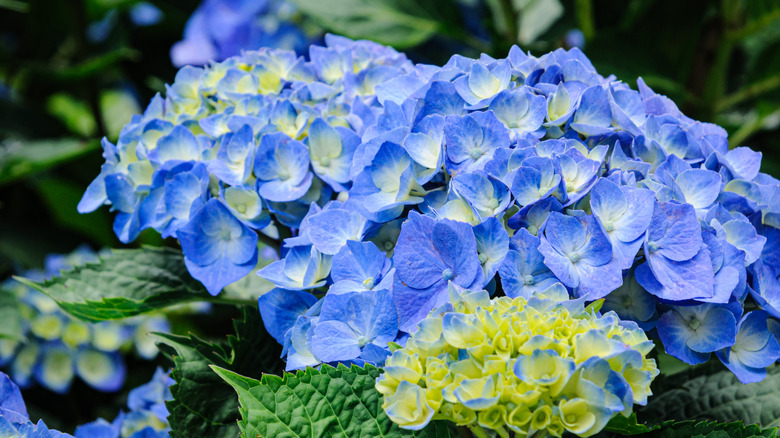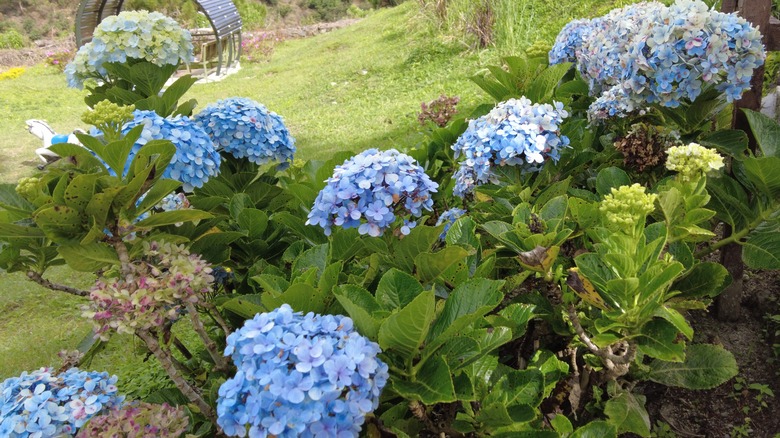How To Water Your Blue Hydrangeas To Keep Their Color Vibrant
Hydrangeas are as fascinating as they are beautiful. The blooms of certain varieties act as a litmus test of the soil around them, changing color depending on its pH — acidic soil will cause hydrangeas to bloom blue, alkaline soil will turn them pink, and soil that's somewhere in between will turn them purple. Some gardeners welcome growing and taking care of hydrangeas of every color, but if you prefer blue blooms, there's an easy trick to get (and keep) your desired hue: watering them with rainwater.
The tap water you're probably filling your watering can with tends to be slightly alkaline, especially if you live in a hard water area. This turns blooms of color-changing hydrangeas, like bigleaf varieties, pink. On the other hand, rainwater is naturally slightly acidic, causing it to work similarly to this vinegar trick that turns hydrangeas from pink to blue. Chemically speaking, acidic soil has more readily available aluminum ions, which interact with the anthocyanin pigments in the blooms. Put simply, rainwater causes acidic soil, which results in vibrant blue hydrangeas.
How to water hydrangeas with rainwater
In order to water hydrangeas with rainwater, you need to actually collect the rainwater, though you might want to think twice before doing it in certain areas. This is typically done with a collection system that routes rainwater from roofs and gutters into a storage receptacle, like a rain barrel. Once you've gathered your water, it's time to put it to use.
Different varieties of hydrangea require different amounts of water, but they generally need to be watered deeply at least once a week. Frequency can increase to as often as every other day during periods of extra heat and dryness, or for newly established plants. Despite their water requirements, hydrangeas still need well-draining soil to prevent root rot. Wait to water established hydrangeas until the top inch of soil is dry.
For a bonus blue boost, you can add compost to lower the pH of the soil. You can also fertilize with aluminum sulfate, but not too often since an overdose can kill your plant. Rainwater will keep blue hydrangeas bluer, but if your starting point is pink, don't expect rainwater to completely change the blooms' color overnight — it could take two to three blooming cycles before you get the color and vibrancy you're looking for.

